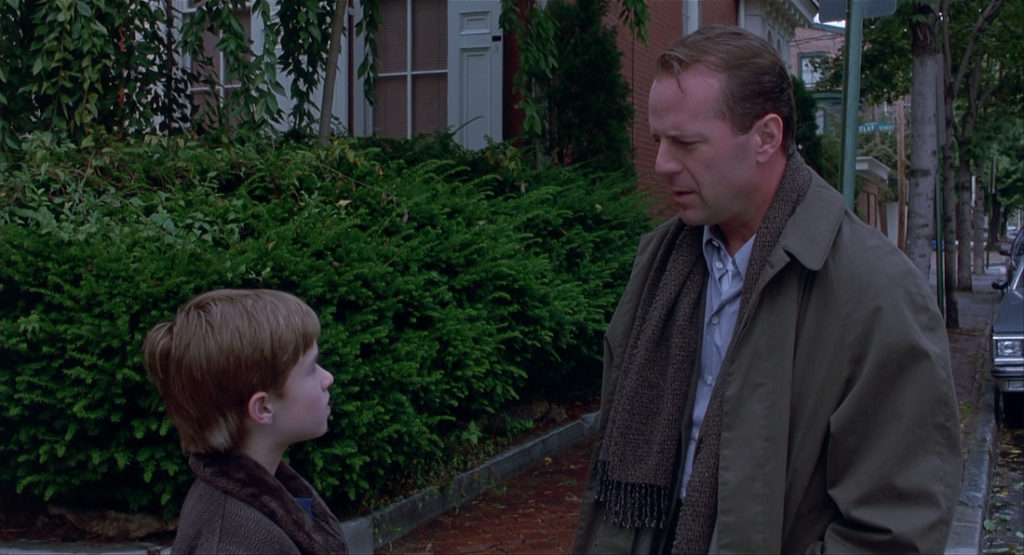While it’s true that screenwriters (and movie studios, networks, and streamers) need to offer audiences something familiar to draw viewers in, it’s a screenwriter’s job to shake things up and subvert expectations when it comes to stories, plots and characterizations. Audiences love the familiar, but they appreciate something shocking and surprising — like a good plot twist.
Here we present five simple ways to help you conjure shocking and surprising (there’s a difference) plot twists in your screenplays. But before we do that, let’s showcase the difference between what shocks us and what surprises us.
The Difference Between Shocking Plot Twists and Surprising Plot Twists
The terms “shocking” and “surprising” are often used interchangeably. However, there’s a subtle difference between the two that screenwriters should keep in mind when writing these different kinds of plot twists.
Shocking Plot Twists
Shocking plot twists are those that evoke a more visceral reaction from the audience — usually at the climax of the story. They create more disbelief and astonishment, and sometimes leave the audience disturbed.
Three of the most shocking plot twists in cinematic history came in the 1990s.
Read More: 101 Great Plot Twist Ideas to Elevate Your Script
Note: Beware of Spoilers for The Sixth Sense, Fight Club, and The Usual Suspects!
The first, The Sixth Sense, made auteur M. Night Shyamalan the go-to shocking plot twist conjurer. We learn that Malcolm — the protagonist of the film — has actually been dead the whole time. He’s a ghost. The revelation left the audience stunned, questioning everything they had watched prior. This is likely what led to the repeat viewings that drove the box office numbers up, as audiences went back to search for clues.
The second, Fight Club, managed to pull off one of the most shocking plot twists of its era — that the two lead characters were actually one person. And the eventual antagonist of the film, Tyler Durden, was the protagonist’s alter ego due to his dissociative identity disorder. Audiences were shocked because, again, everything up until that twist is now was now in question. It subverted expectations and made audiences wonder what was real, and what wasn’t.
The third, The Usual Suspects, revealed that Verbal Kint — the film’s narrator — is actually Keyser Soze, the mastermind behind the entire operation. The supposed weak and vulnerable Verbal being harshly interrogated was nothing more than a ruse. This left the audience feeling shocked and in disbelief.
Surprising Plot Twists
Surprising plot twists deviate from what was anticipated or predicted but don’t always necessarily provoke the strong emotional response that a shocking plot twist would.
Note: Beware of Minor Spoilers for Everything Everywhere All at Once and Mission: Impossible movies.
In Everything Everywhere All At Once, it’s revealed that Jobu Tupaki, the villain of the story, is actually the Alpha version of Evelyn’s daughter Joy.
In the Mission Impossible movies, every time it’s revealed that a character is using one of the face masks, the audience is surprised but not overall shaken.
Surprising plot twists can be more peppered throughout the script, playing with the audience’s (and script reader’s) predictive anticipation with minor twists that change the course of the story.
So, how do screenwriters come up with these surprising and shocking plot twists?
5 Ways to Create Plot Twists
1. Subvert Expectations
Most movies and series follow generally established conventions or tropes. The filmmakers and writers do this to engage the audience and give them what they are familiar with. Audiences are highly risk-averse. They know what they want to see in any given genre, and they expect certain conventional storylines, plot tropes and character arcs.
Knowing this, you can set up those audience expectations and point them in one narrative direction and then choose a place within that story or plot to deliver a surprising plot twist that goes against their assumptions of what is about to happen.
This is the easiest way to conjure plot twists for your script.
- If conventional wisdom tells the audience that the guy will get the girl at the end of a romantic comedy, maybe the guy doesn’t get the girl but learns something valuable in the end.
- If audiences expect a secondary character to die, consider making them the hero of the story.
- Perhaps the protagonist’s mentor is actually a villain?
If you know movies and series storytelling, you have a general knowledge of what to expect in a story. Use that knowledge to go in an entirely different direction than what would be expected.
2. Toy with the Audience
If you’re taking the audience down familiar roads and story paths, meet their expectations and subvert their expectations at will. This will create an edge-of-their-seat experience where they don’t know where the story and its characters are going to take them. This goes beyond subverting expectations. You’re playing with those expectations.
This is by far the most entertaining and satisfying part of writing a screenplay. You’re taking the audience (and the script reader) on a ride. Depending on the genre, it could be any type of ride.
- An emotional ride (Drama)
- A hysterical ride (Comedy)
- A horrifying ride (Horror)
- An informative ride (True Story)
- An exhilarating ride (Action)
3. Create Multi-Motivations in Characters
Revealing hidden character motivations can be an easy way to surprise and shock the audience. These types of plot twists are intertwined with character arcs and also offer an opportunity for more character depth within your story. When you reveal that a character has dual or multiple motivations than what has been initially set up, added suspense is injected into the story. It also keeps the audience guessing when it comes to not just the plot points of the story, but the character motivations.
4. Utilize Time Shifts and Play with the Chronological Order of Events
Flashbacks, flashforwards, and nonlinear storytelling can be highly effective in surprising and shocking the audience. Forget past screenplay educational books that tell you these story devices are cheats or unwanted. It’s how you use them that truly matters.
- Start your script at the climax of the story — and then flashback to the protagonist’s ordinary world to surprise and shock the audience as to how the character could find themselves in such a predicament.
- Have two storylines begin in different parts of the story — one starting from the beginning, and one starting from the end — and then have them converge in surprising or shocking fashion.
- Flashback to pivotal revelations that reveal ulterior motives or otherwise hidden backgrounds of characters that create surprising and shocking plot twists.
As long as you structure these stories well, and don’t use them as crutches for mere exposition, these types of practices can create some unique and memorable plot twists.

The Sixth Sense (1999)
5. Start from the Twist Before Developing and Writing the Script
While seemingly divine inspiration during the development and writing phase of the story is great, starting the initial process with already knowing various surprising plot twists and perhaps a major shocking plot twist for the end is always the best way to deliver. Why? Because you can spend the whole development and writing process leading up to those pre-conceived twists.
The reason The Sixth Sense delivered its shocking plot twist so well was primarily because Shyamalan peppered the script with clues, plants, payoffs and foreshadowing.
Read More: Screenwriting Plants and Payoffs: The Sixth Sense
Once you have a general idea or concept, start thinking about the various surprising and shocking plot twists that you could apply to the story you’re building. Think of those before anything else. Challenge yourself to find opportunities to subvert expectations, toy with the audience, create multi-motivations in characters, and possibly utilize time shifts and play with the chronological order of events.
Read More: 101 Great Plot Twist Ideas to Elevate Your Script
Ken Miyamoto has worked in the film industry for nearly two decades, most notably as a studio liaison for Sony Studios and then as a script reader and story analyst for Sony Pictures.
He has many studio meetings under his belt as a produced screenwriter, meeting with the likes of Sony, Dreamworks, Universal, Disney, and Warner Brothers, as well as many production and management companies. He has had a previous development deal with Lionsgate, as well as multiple writing assignments, including the produced miniseries BLACKOUT, starring Anne Heche, Sean Patrick Flanery, Billy Zane, James Brolin, Haylie Duff, Brian Bloom, Eric La Salle, and Bruce Boxleitner, the feature thriller HUNTER’S CREED, and many produced Lifetime thrillers. Follow Ken on Twitter @KenMovies and Instagram @KenMovies76.
CHECK OUT OUR PREPARATION NOTES SO YOU START YOUR STORY OFF ON THE RIGHT TRACK!
The post 5 Simple Ways to Conjure Shocking and Surprising Plot Twists appeared first on ScreenCraft.
Go to Source
Author: Ken Miyamoto




